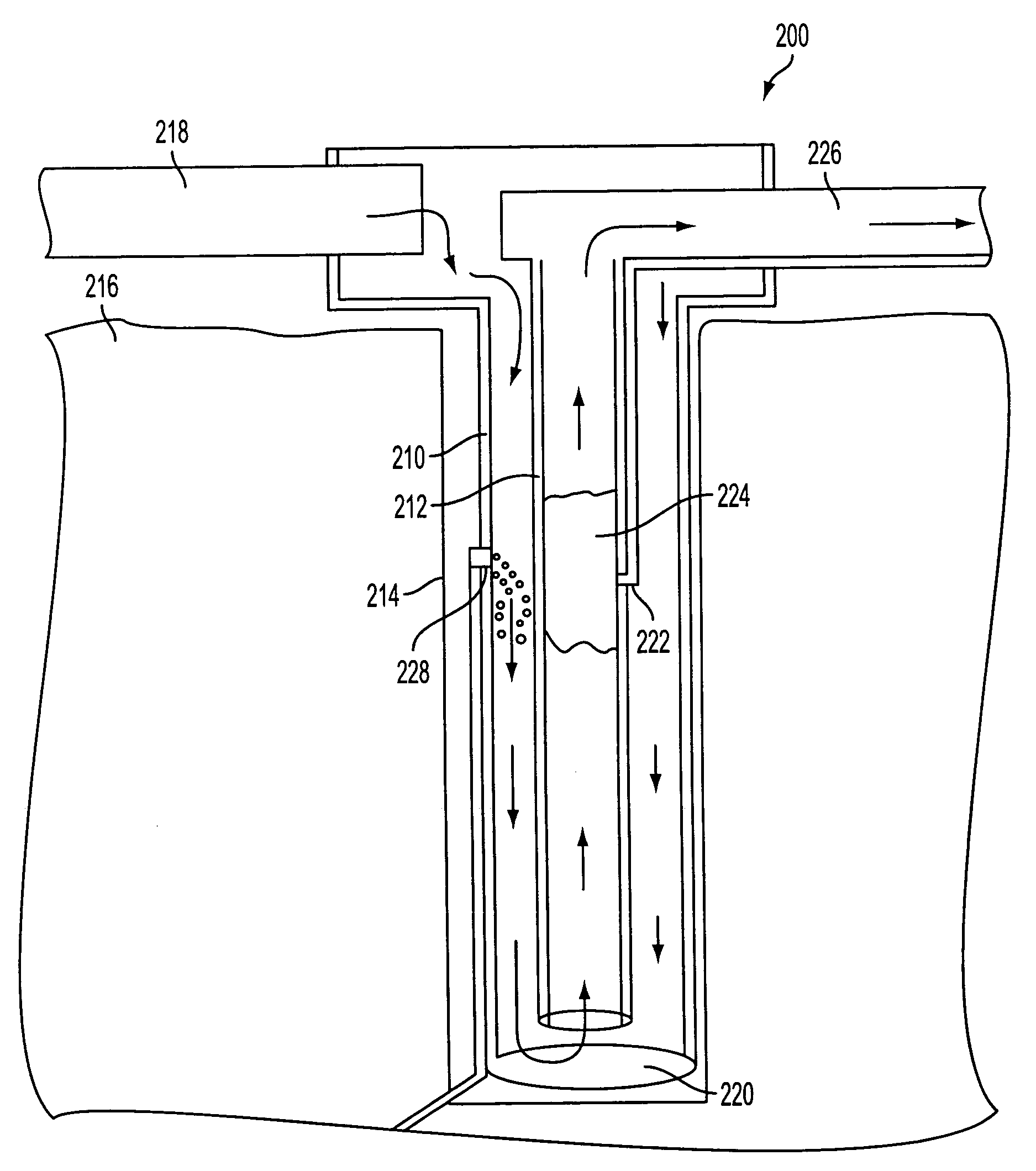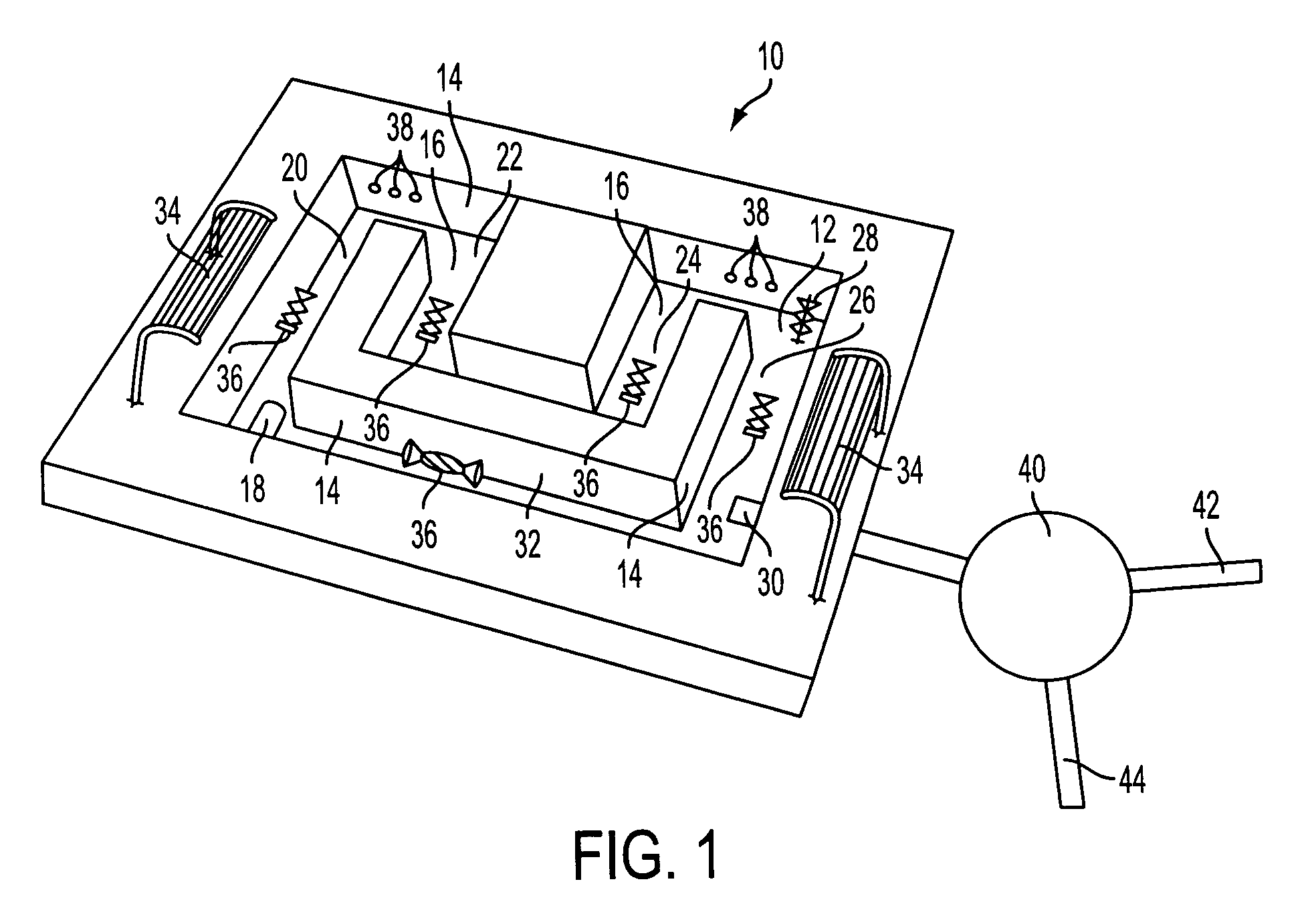Method and system for removal of contaminants from aqueous solution
a technology of aqueous solution and contaminants, which is applied in the direction of quary waste water treatment, multi-stage water/sewage treatment, separation process, etc., can solve the problems of inability to effect the final clean up of dilute uranium-contaminated bodies of water, the most effective exchange process, and the least effective ion exchange process at relatively low concentrations of uranium, etc., to achieve the effect of removing
- Summary
- Abstract
- Description
- Claims
- Application Information
AI Technical Summary
Benefits of technology
Problems solved by technology
Method used
Image
Examples
Embodiment Construction
[0018]A live, photosynthetic bioreactor method and system for removing uranium and other substances from aqueous solution is described, the system being especially advantageous for removal of uranium from solution having low levels of uranium contamination, in the 0–20 ppm range.
[0019]Various photosynthetic algae show a promising capacity to remove uranium from aqueous solution, even dilute solution with uranium concentrations in the range of 0–20 ppm. These include Chlorella, which shows a wide range of ability to remove most uranium species, as well as Scenedesmus SR, Scenedesmus SE, Oocystis, and Chlamydomonas.
[0020]Scanning election microscopy of various photosynthetic algae has demonstrated that, after treatment of uranium-contaminated water with the above-referenced algae, while some surface binding of uranium to the algal cells was observed, most of the uranium was bound within the algal cells, in micronodules. These algae include:
[0021]Chlorella sp. MM1 (Chlorella CV);
[0022...
PUM
| Property | Measurement | Unit |
|---|---|---|
| diameter | aaaaa | aaaaa |
| area | aaaaa | aaaaa |
| transparent | aaaaa | aaaaa |
Abstract
Description
Claims
Application Information
 Login to View More
Login to View More - R&D
- Intellectual Property
- Life Sciences
- Materials
- Tech Scout
- Unparalleled Data Quality
- Higher Quality Content
- 60% Fewer Hallucinations
Browse by: Latest US Patents, China's latest patents, Technical Efficacy Thesaurus, Application Domain, Technology Topic, Popular Technical Reports.
© 2025 PatSnap. All rights reserved.Legal|Privacy policy|Modern Slavery Act Transparency Statement|Sitemap|About US| Contact US: help@patsnap.com



